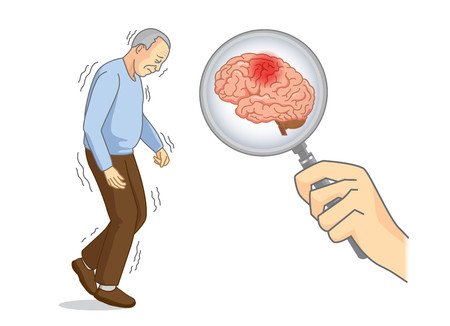
Introduction to Nervous System Disorders
Overview of the Nervous System
The nervous system is a complex network of nerves and cells that transmit signals between different parts of the body. It is divided into two main parts: the central nervous system (CNS), which includes the brain and spinal cord, and the peripheral nervous system (PNS), consisting of all the nerves outside the CNS. The nervous system plays a crucial role in coordinating and controlling bodily functions, ranging from simple motor movements to complex cognitive processes.
Common Causes of Nervous System Disorders
Nervous system disorders can result from various factors, including genetic predisposition, infections, trauma, autoimmune diseases, and degenerative conditions. Some common causes of nervous system disorders include stroke, epilepsy, multiple sclerosis, Alzheimer’s disease, Parkinson’s disease, and spinal cord injuries. These disorders can significantly impact an individual’s quality of life, leading to symptoms such as paralysis, seizures, memory loss, and impaired motor function. Understanding the underlying causes of these disorders is essential for accurate diagnosis and effective treatment strategies.
Neurodevelopmental Disorders
Autism Spectrum Disorder
Neurodevelopmental disorders encompass a range of conditions characterized by impairments in the growth and development of the brain or central nervous system. Autism Spectrum Disorder (ASD) is one such condition, typically diagnosed in early childhood, impacting communication, social interaction, and behavior. Individuals with ASD may exhibit repetitive behaviors, difficulties in verbal and non-verbal communication, and challenges in understanding and responding to social cues. Early intervention and tailored support strategies play a critical role in helping individuals with ASD lead fulfilling lives.
Attention-Deficit/Hyperactivity Disorder
Attention-Deficit/Hyperactivity Disorder (ADHD) is another prevalent neurodevelopmental disorder that often manifests in childhood and continues into adulthood. Individuals with ADHD may struggle with maintaining attention, impulse control, and hyperactivity. These challenges can affect academic performance, relationships, and daily functioning. Treatment for ADHD often involves a combination of behavioral therapy, medication, and support services to help individuals manage their symptoms effectively and improve their overall quality of life. Understanding neurodevelopmental disorders like ASD and ADHD is crucial in providing timely interventions and support to those affected.
Neurodegenerative Disorders
Alzheimer’s Disease
Among neurodegenerative disorders, Alzheimer’s Disease stands out as a common condition characterized by progressive cognitive decline. This degenerative ailment affects memory, thinking skills, and eventually the ability to carry out daily tasks. Individuals with Alzheimer’s often experience confusion, disorientation, and challenges in recognizing familiar faces or places. While there is no cure, early diagnosis and appropriate management can significantly improve the quality of life for those affected by this disease.
Parkinson’s Disease
Parkinson’s Disease is another neurodegenerative disorder that primarily affects movement. Symptoms include tremors, stiffness, and difficulty with balance and coordination. These motor issues can impact daily activities and reduce overall quality of life. While treatment focuses on symptom management through medication, therapy, and in some cases, surgery, Parkinson’s remains a progressive condition. Increased awareness, research, and support for individuals living with Parkinson’s are crucial in enhancing their well-being and ensuring a better quality of life. Understanding these neurodegenerative disorders is vital in providing appropriate care and support to those affected by these challenging conditions.
Stroke
Ischemic Stroke | Hemorrhagic Stroke
Blog Section:When it comes to neurological health, strokes are a critical concern. Ischemic strokes, the most common type, occur when a blood clot blocks a blood vessel in the brain, leading to oxygen deprivation and brain cell damage. On the other hand, hemorrhagic strokes result from a ruptured blood vessel, causing bleeding in the brain. Both types can have severe consequences, affecting various functions like movement, speech, and cognition.For individuals affected by strokes, swift medical intervention is crucial. Recognizing the signs like sudden weakness, speech difficulties, or severe headaches and seeking immediate medical help can significantly improve outcomes. Rehabilitation, therapy, and lifestyle changes often play a vital role in the recovery process post-stroke. By raising awareness about stroke prevention, risk factors, and symptoms, we can empower individuals to take proactive steps in safeguarding their neurological health.Understanding the nuances of strokes, whether ischemic or hemorrhagic, is essential for prompt action and effective care. With continued research and education, we can strive towards better management and prevention of these life-altering events.
Also Read: Understanding Neurobiological Disorders: Causes, Symptoms
Epilepsy
Treatment Options for Epilepsy
Blog Section:When discussing neurological conditions, epilepsy is a topic that cannot be overlooked. Epilepsy is a neurological disorder characterized by recurrent seizures, which are sudden bursts of electrical activity in the brain. These seizures can vary widely, from momentary lapses of awareness to full-body convulsions.
Types of Seizures:
There are several types of seizures, including focal seizures, generalized seizures, and absence seizures. Each type presents with distinct symptoms and may require different approaches to management and treatment.
Treatment Options for Epilepsy:
Treatment for epilepsy often involves medications to control seizures. In cases where medications are ineffective, other options such as surgery, vagus nerve stimulation, or dietary therapies may be considered. The goal of treatment is to reduce the frequency and severity of seizures while minimizing side effects.By educating individuals about the types of seizures, available treatment options, and lifestyle modifications, we can enhance understanding and support those living with epilepsy for improved quality of life.
